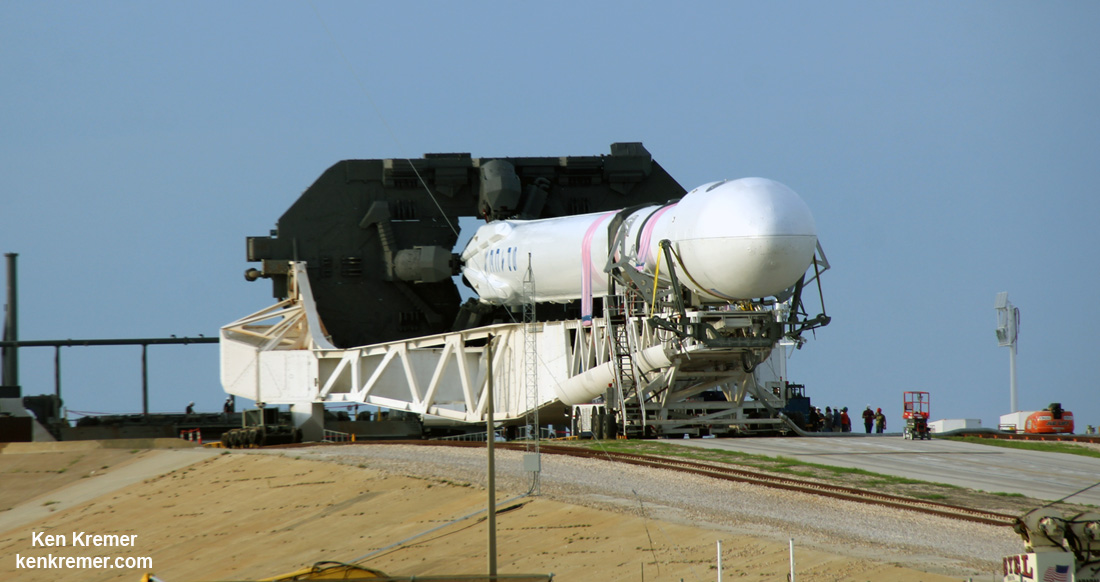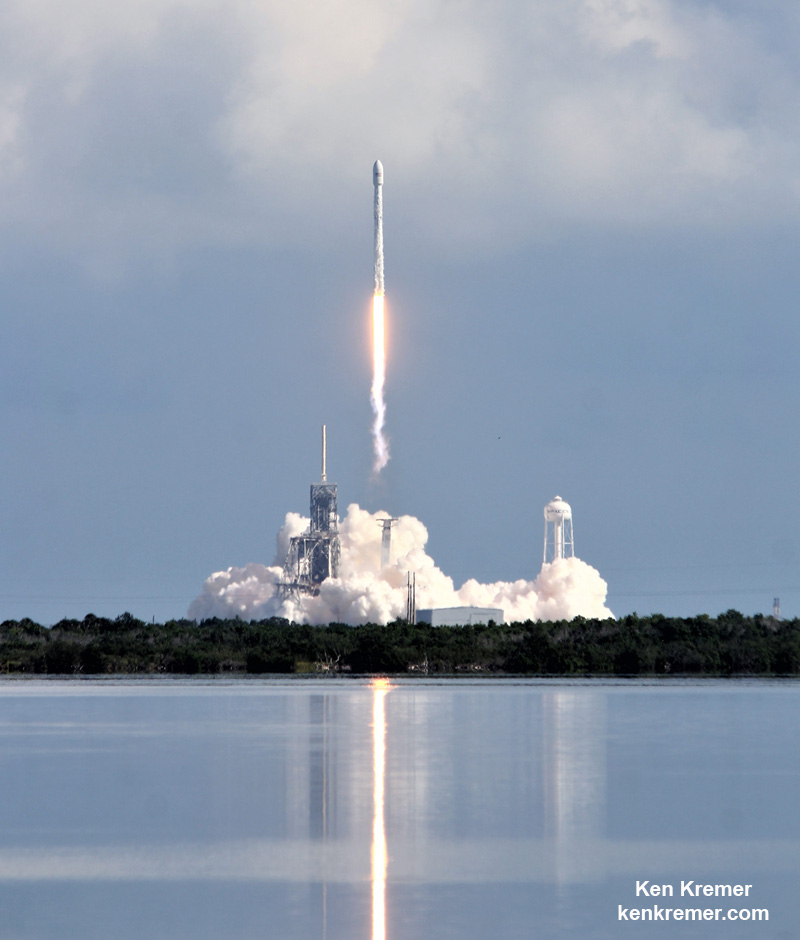
KENNEDY SPACE CENTER, FL – Amidst the frenzy of ‘Sunshine State’ preparations for Cat 5 monster Hurricane Irma and quite dismal weather favorability odds, the skies surrounding the Florida Space Coast suddenly parted just in the nick of time enabling the Air Force’s secret military X-37B spaceplane to blast off this morning (Sept. 7) on a SpaceX Falcon 9 as the booster nailed another thrilling ground landing back at the Cape.
The SpaceX Falcon 9 roared to life at 10 a.m. EDT (1400 UTC) Thursday morning and soared aloft from seaside Launch Complex 39A on NASA’s Kennedy Space Center into nearly clear blue skies after the classified launch time was kept guarded until just 10 minutes before liftoff.
Due to the potential for catastrophic destruction from approaching Hurricane Irma this was the last chance for the X-37B to escape Florida to orbit before the Kennedy Space Center and Cape Canaveral Air Force Station almost certainly close on Friday, the backup launch opportunity.
The X-37B OTV spaceplane reached orbit as planned on SpaceX’s 13th launch of the year.
“The 45th Space Wing successfully launched a SpaceX Falcon 9 launch vehicle Sept. 7, 2017, from Kennedy Space Center’s Launch Complex 39A,” the USAF and 45th Space Wing confirmed in a post launch statement.
The Falcon 9 launch was absolutely gorgeous taking place under near perfect weather conditions at launch time and putting on a long sky show as the rocket accelerated to orbit with its precious cargo.
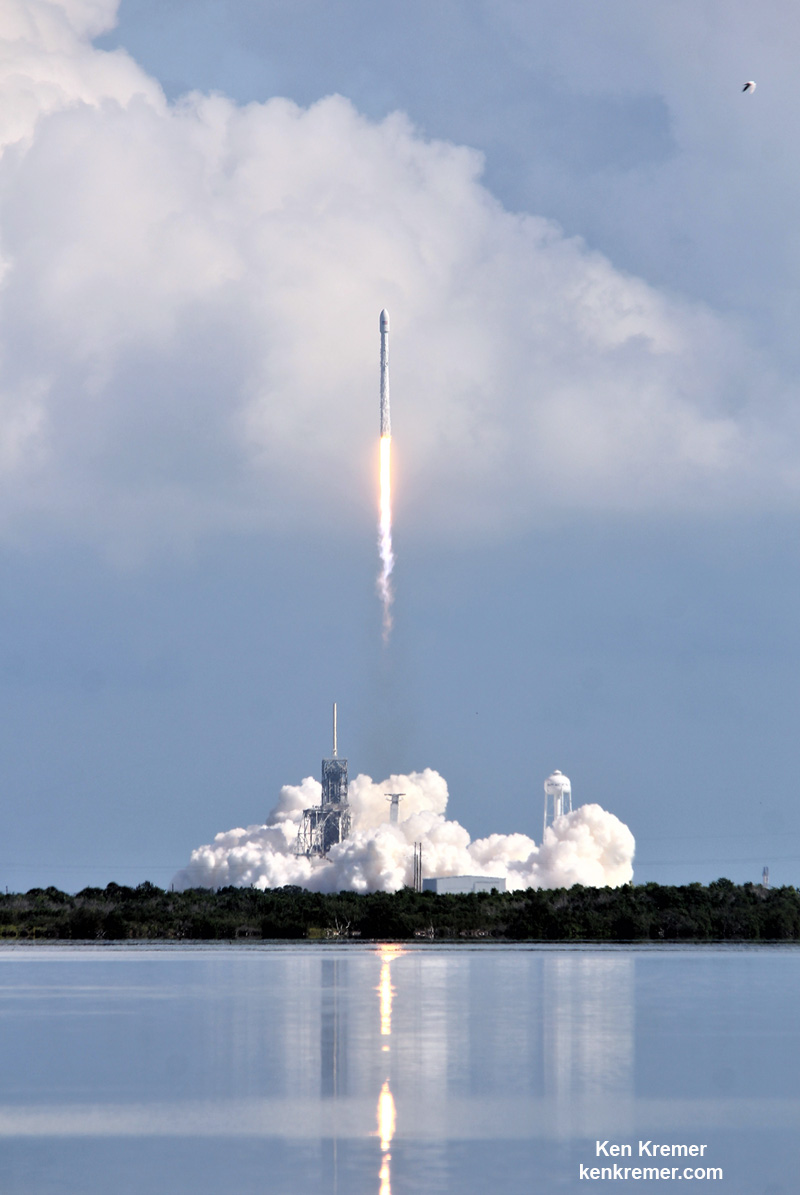
The nine Merlin 1D first stage engines ignited to generate a combined 1.7 million pounds of thrust fueled by liquid oxygen and RP-1 propellants, sending a huge exhaust plume billowing from behind as the rocket ascended off pad 39A and thundered aloft.
After first stage burnout and main engine cutoff the stages separated at T plus 2 min 26 seconds.
After successfully delivering the secret USAF mini-shuttle to orbit, SpaceX engineers completed the 2nd half of the double headed space spectacular when the Falcon 9 first stage booster successfully made a guided soft landing back at Cape Canaveral Air Force Station (CCAFS).
The boosters high speed descent generated multiple shockingly loud sonic booms as the 156-foot-tall first stage approached SpaceX’s dedicated Landing Zone-1 (LZ-1) on CCAFS that reverberated for dozens and dozens of miles across and beyond the Space coast region.
The mid-morning daylight first stage precision guided landing offered spectators a magnificent up close view of the rocket reusability technology envisioned by SpaceX’s billionaire CEO Elon Musk to drastically slash the high costs of launching people and payloads to space.
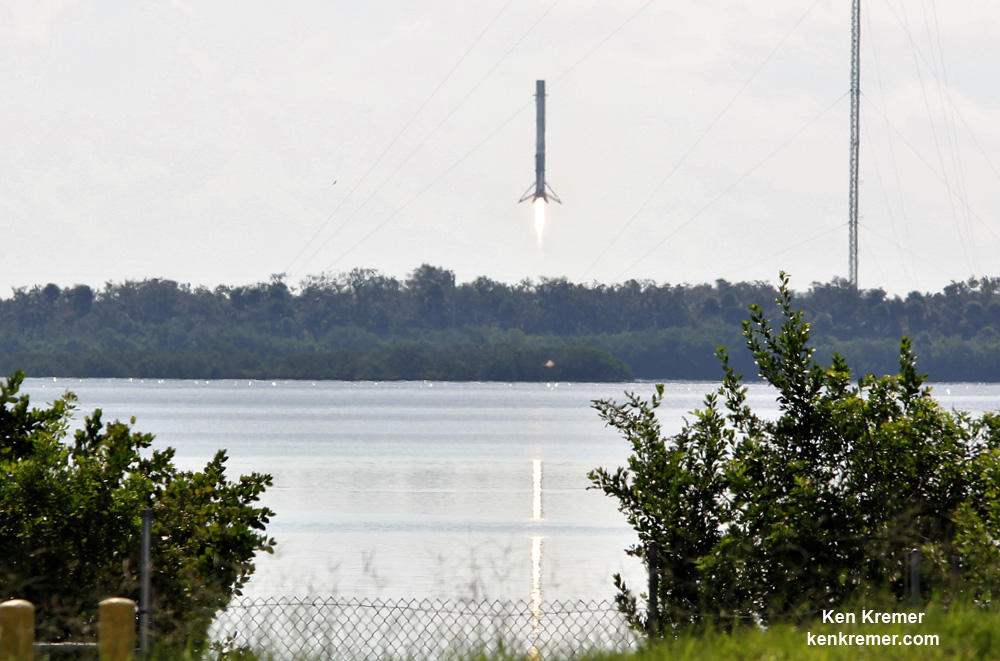
Meanwhile, Hurricane Irma continues barreling towards Florida packing winds of 185 mph as one of the strongest Atlantic storms ever. It is being closely tracked in incredibly high resolution by the new NASA/NOAA GOES-16 (GOES-R) satellite launched late last year on a ULA Atlas V in Nov 2016.
Here’s the latest storm track updated to Friday morning Sep 8:
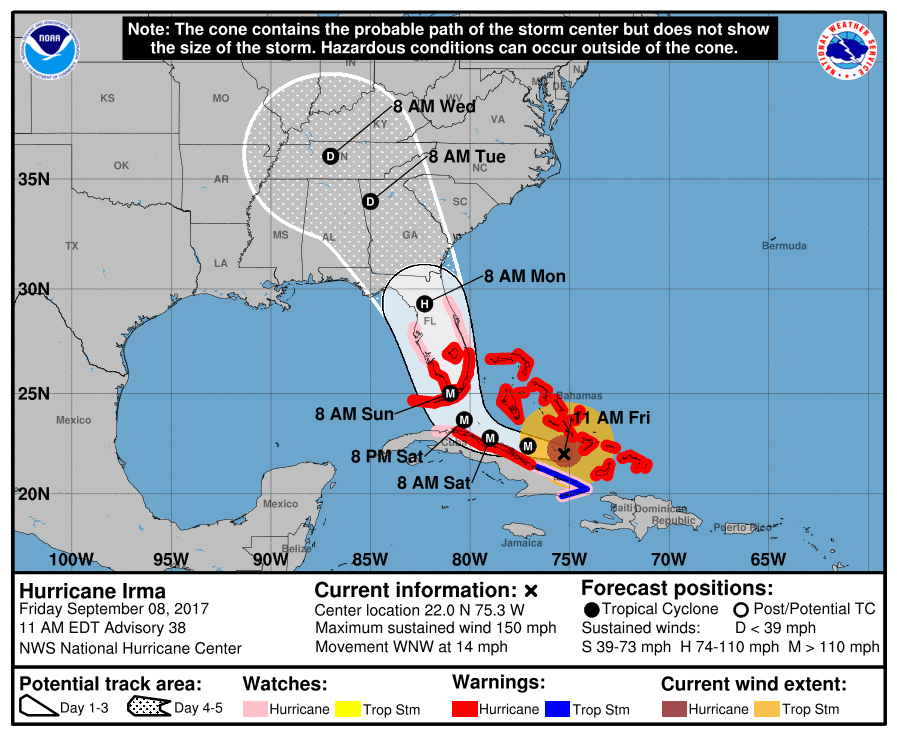
The X-37B reusable mini-shuttle is a secretive technology testing spaceplane flying on its fifth mission overall for the U.S. Air Force Rapid Capabilities Office.
“The OTV is designed to demonstrate reusable spacecraft technologies for America’s future in space and operate experiments, which can be returned to and examined on Earth,” said the USAF.
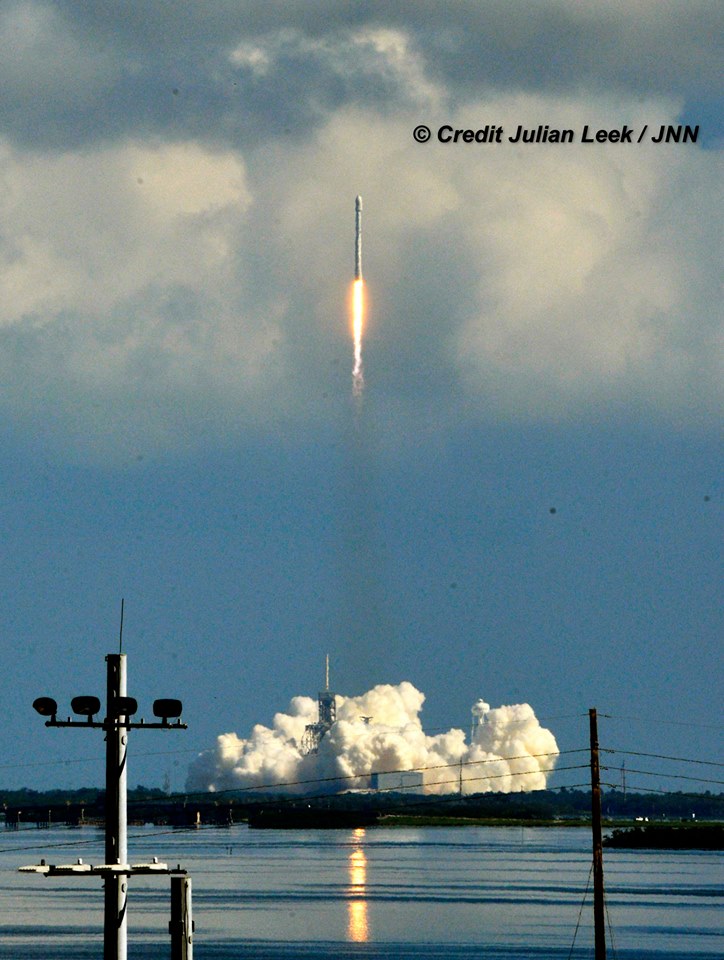
Also known as the Orbital Test Vehicle, the X-37B launched on the OTV-5 mission marks the programs maiden liftoff on the 230-foot-tall SpaceX Falcon 9.
All four prior OTV missions launched on the United Launch Alliance Atlas V and ended with runway landings in either California of Florida.
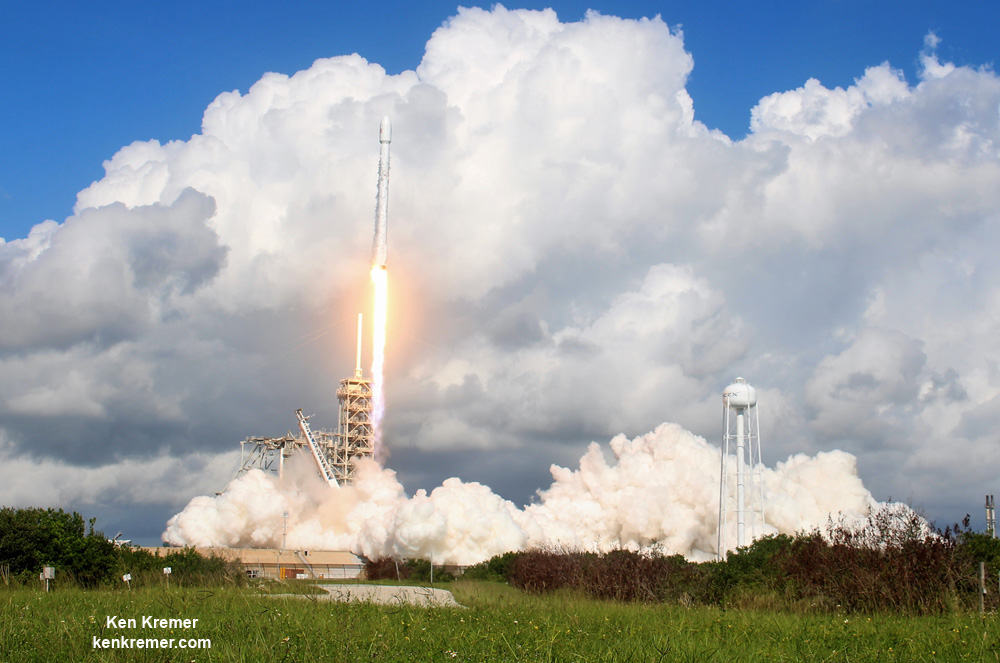
The X-37B launches vertically like a satellite but lands horizontally like an airplane and functions as a reliable and reusable space test platform for the U.S. Air Force.
The Boeing-built X-37B is processed for flight at the Kennedy Space Center, FL, using refurbished former NASA space shuttle processing facilities (OPFs) now dedicated to the reusable mini-shuttle, also named the Orbital Test Vehicle (OTV).

The last blastoff of the X-37B took place more than 2 years ago on May 20, 2015 when the OTV-4 mission launched on a ULA Atlas V on May 20, 2015 from Space Launch Complex-41 on Cape Canaveral Air Force Station.
After spending a record setting 718 days in orbit, the X-37B vehicle completed its fourth mission with a runway landing back at KSC’s Shuttle Landing Facility earlier this year on May 7, 2017.
Overall the OTV unmanned spacecraft have spent a total of 2,085 days in orbit.
The 11,000 pound (4990 kg) state-of-the art reusable OTV space plane is about a quarter the size of a NASA space shuttle. The vehicle measures 29 ft 3 in (8.9 m) in length with a wingspan of 14 ft 11 in (4.5 m).
The X-37B was originally developed by NASA but was transferred to the Defense Advanced Research Projects Agency (DARPA) in 2004.
Since then most but not all of the spaceplane’s goals have been shrouded in secrecy.
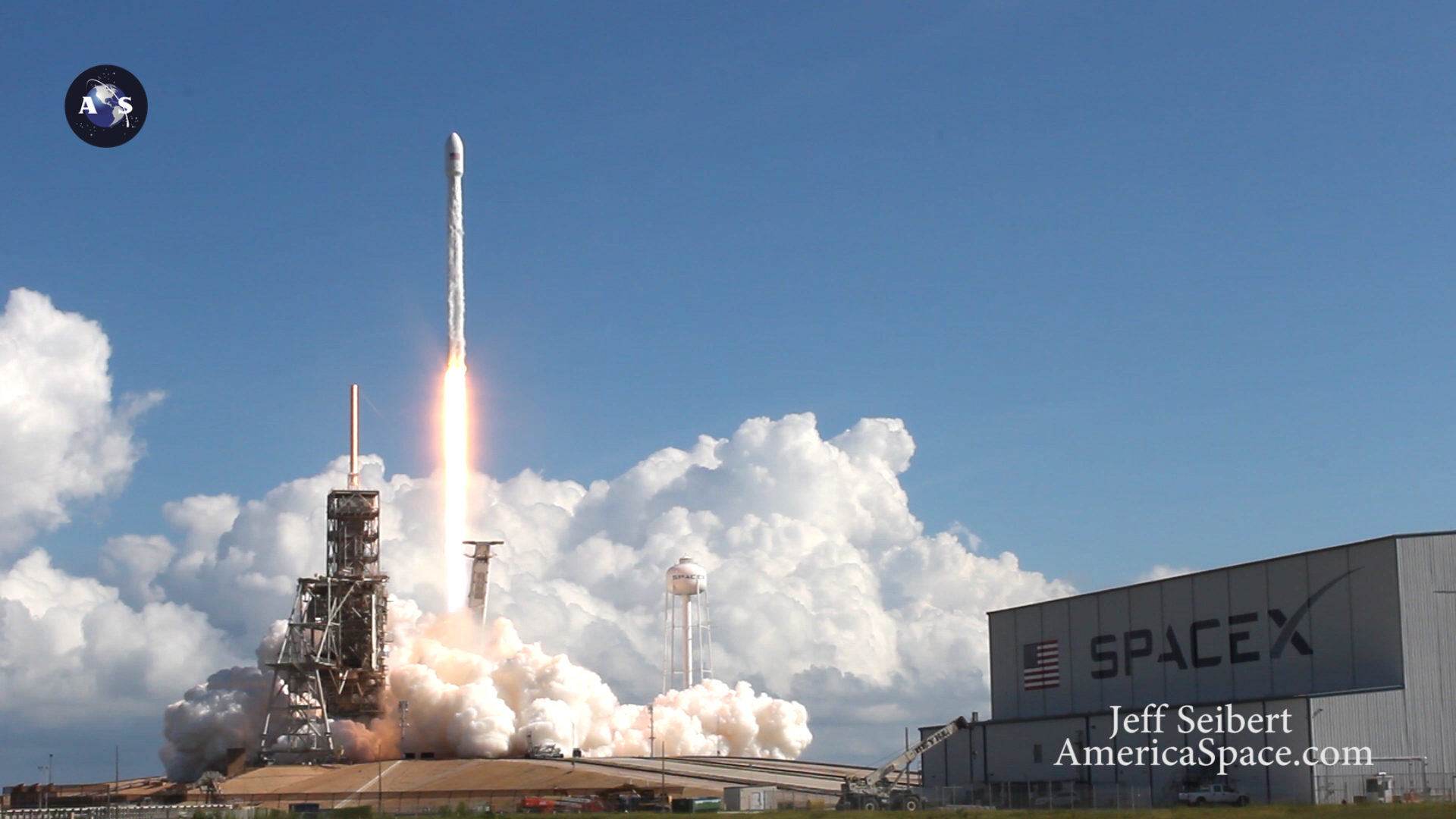
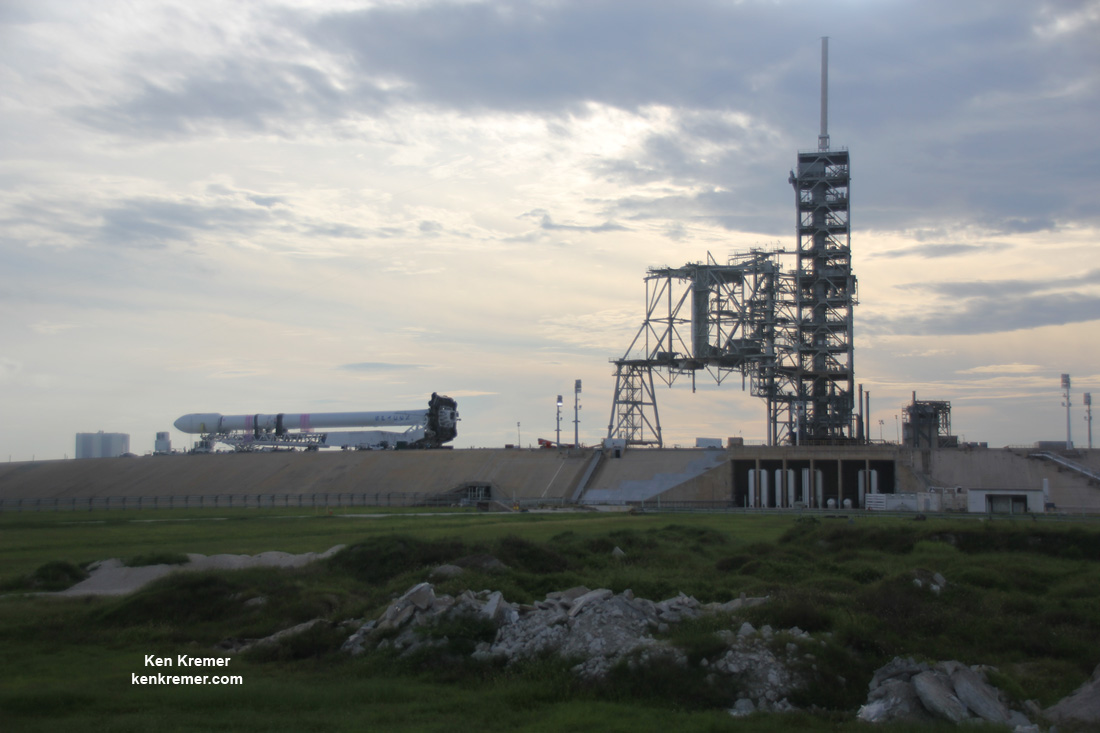
Watch for Ken’s continuing onsite X-37B OTV-5 and NASA mission reports direct from the Kennedy Space Center and Cape Canaveral Air Force Station, Florida.
Stay tuned here for Ken’s continuing Earth and Planetary science and human spaceflight news.
